Evidence That Mythical Creatures Exist
Unicorns
 Image Source / Good HousekeepingYou'd think that learning unicorns actually existed would be a dream come true (literally), but you might be a little disappointed when you find out what they actually looked like. Researchers have found, based on a skull fossil discovered in Kazakhstan, that a 'unicorn' existed around 29,000 years ago. But instead of a white horse with a rainbow horn, it looked more like a rhino.
Image Source / Good HousekeepingYou'd think that learning unicorns actually existed would be a dream come true (literally), but you might be a little disappointed when you find out what they actually looked like. Researchers have found, based on a skull fossil discovered in Kazakhstan, that a 'unicorn' existed around 29,000 years ago. But instead of a white horse with a rainbow horn, it looked more like a rhino.Advertisement
Loch Ness Monster
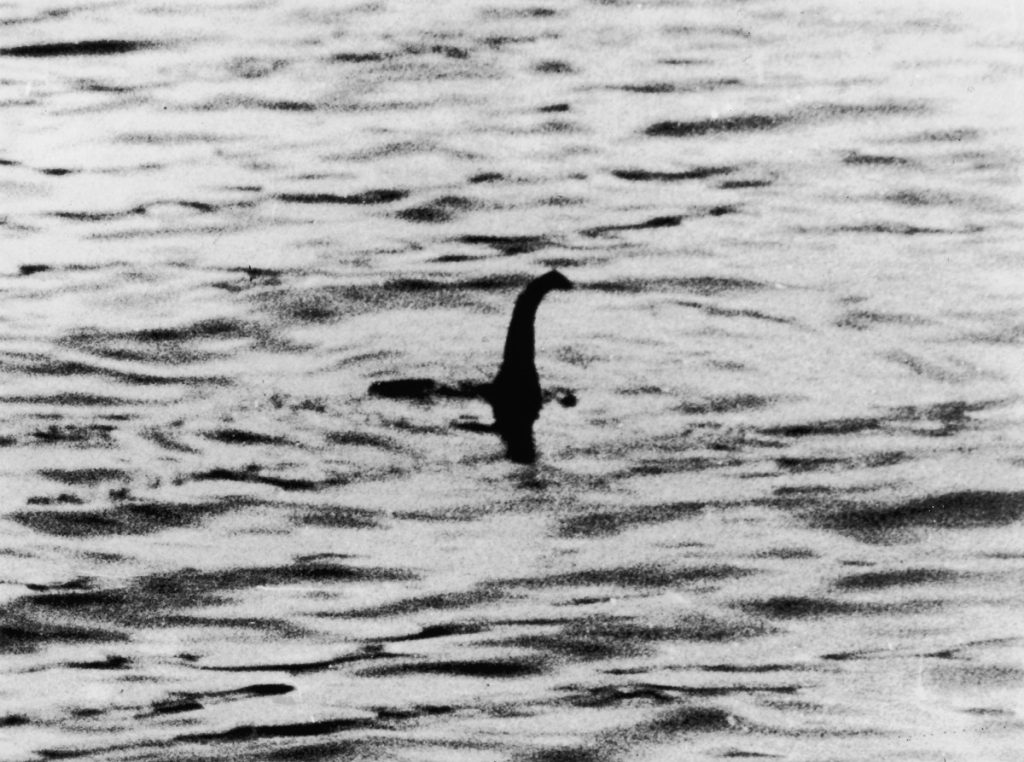 Image Source / www.history.comTo confirm that the mythical creature said to roam Loch Ness in Scotland actually exists means to consider that it might just be a giant eel rather than the hoax depictions we've been led to believe. A scientific study in 2019, which took a DNA survey for organisms living in the loch, determined that the water contained a lot of eels. So if Nessie does exist, she's likely an eel!
Image Source / www.history.comTo confirm that the mythical creature said to roam Loch Ness in Scotland actually exists means to consider that it might just be a giant eel rather than the hoax depictions we've been led to believe. A scientific study in 2019, which took a DNA survey for organisms living in the loch, determined that the water contained a lot of eels. So if Nessie does exist, she's likely an eel!Advertisement
Fairies
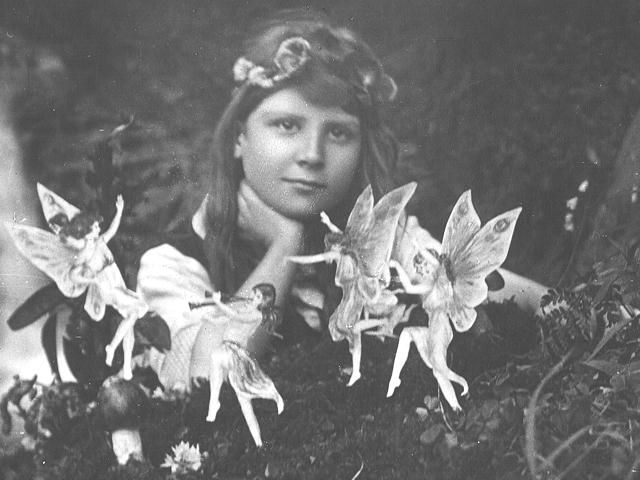 Image Source / Live ScienceFairies are mythical winged creatures that appear in folklore around the world. One of the most famous encounters with fairies was when Frances Griffith and her cousin took this photograph of dancing fairies which, at the time, was believed to be genuine, with many people believing the fairies were real. It later turned out that Frances had cut out the fairies from a book. But that doesn't stop modern day people still believing.
Image Source / Live ScienceFairies are mythical winged creatures that appear in folklore around the world. One of the most famous encounters with fairies was when Frances Griffith and her cousin took this photograph of dancing fairies which, at the time, was believed to be genuine, with many people believing the fairies were real. It later turned out that Frances had cut out the fairies from a book. But that doesn't stop modern day people still believing.Advertisement
Mermaids
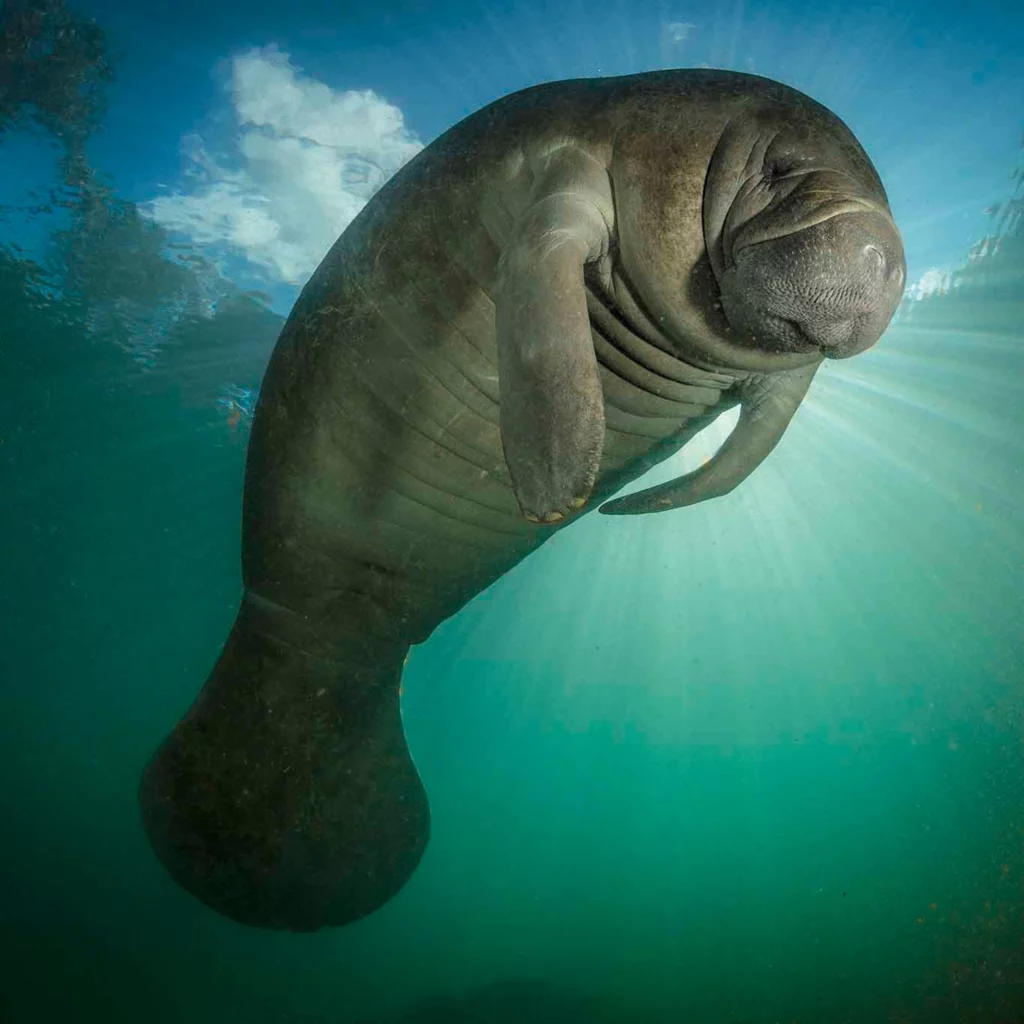 Image Source / National GeographicMermaids - half human and half fish - are part of sailing legend (or Disney legend if you're a fan of Ariel) but do mermaids exist? Yes. Well, kind of. The legend of the mermaid does come from a real-life creature, which is the less glamorous manatee! Manatees have been mistaken for mermaids by sailors in the past because of their human-like size, human-like fingers on their flippers and the fact that can even stand up in shallow water.
Image Source / National GeographicMermaids - half human and half fish - are part of sailing legend (or Disney legend if you're a fan of Ariel) but do mermaids exist? Yes. Well, kind of. The legend of the mermaid does come from a real-life creature, which is the less glamorous manatee! Manatees have been mistaken for mermaids by sailors in the past because of their human-like size, human-like fingers on their flippers and the fact that can even stand up in shallow water.Advertisement
The Kraken
 Image Source / NPR
Image Source / NPRAny Davy Jones fan will have wished this creature was real - or maybe not if you don't want your ship dragged down to the depths. Because, you know... we all have ships at our disposal. But anyway, the legend of the kraken actually came from a creature which very much exists - and although it doesn't have a pastime of sinking ships, it does dwell in the ocean - as the giant squid!
Advertisement
Dragons
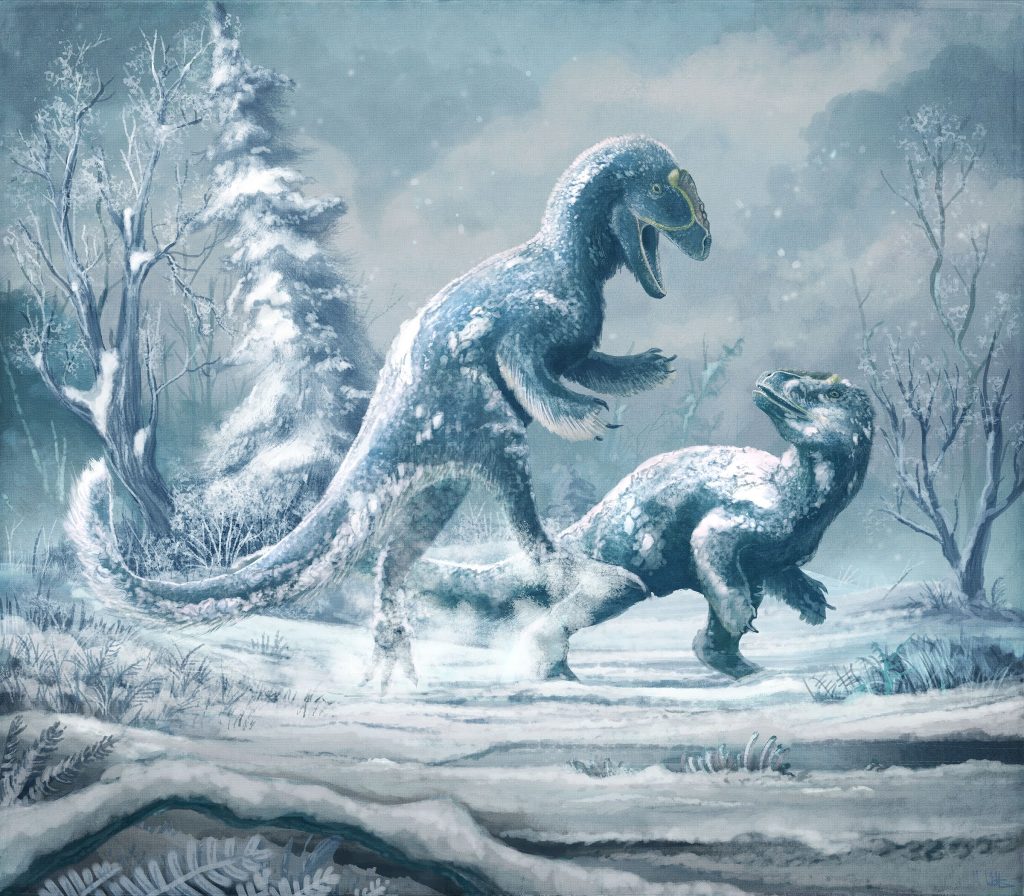 Image Source / Mark Witton's Blog It's very unlikely there's a single person out there who hasn't dreamed about riding their own dragon and living their best Targaryen life. But the dragon has always been a very unreal, very legendary mythical creature. Or has it? The fact is, the legend of the dragon came from the very real existence of dinosaurs. But aside from that, we all know that dragons like the Komodo dragon or the Bearded dragon exist - they just can't fly or breath fire (that we know of!).
Image Source / Mark Witton's Blog It's very unlikely there's a single person out there who hasn't dreamed about riding their own dragon and living their best Targaryen life. But the dragon has always been a very unreal, very legendary mythical creature. Or has it? The fact is, the legend of the dragon came from the very real existence of dinosaurs. But aside from that, we all know that dragons like the Komodo dragon or the Bearded dragon exist - they just can't fly or breath fire (that we know of!).Pouakai
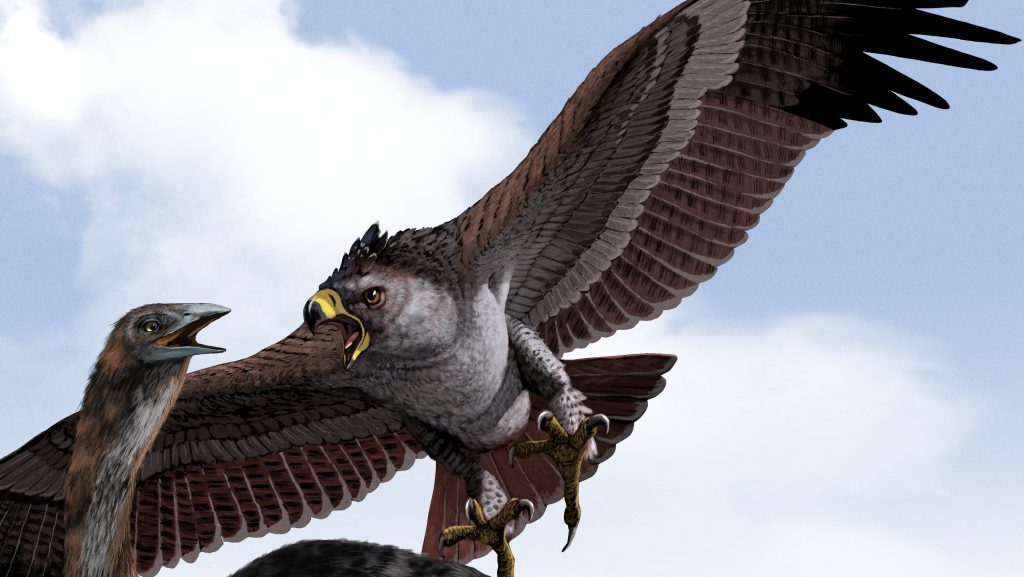 Image Source / The New York Times
Image Source / The New York TimesAdvertisement
Advertisement
Roc
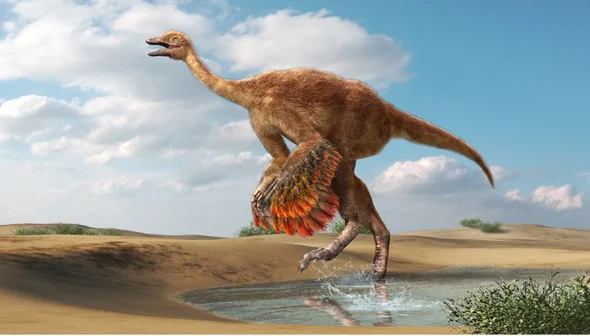 Image Source / Scientific American BlogsIn mythology, the roc gives the pouakai a run for its money. This bird of prey was said to be so big it could lift an elephant off the ground. It was believed that the roc lived off the coast of Africa. In reality, the roc is believed to have been the aptly named 'elephant bird', which weighed half a ton, but couldn't actually fly!
Image Source / Scientific American BlogsIn mythology, the roc gives the pouakai a run for its money. This bird of prey was said to be so big it could lift an elephant off the ground. It was believed that the roc lived off the coast of Africa. In reality, the roc is believed to have been the aptly named 'elephant bird', which weighed half a ton, but couldn't actually fly!Advertisement
Griffins
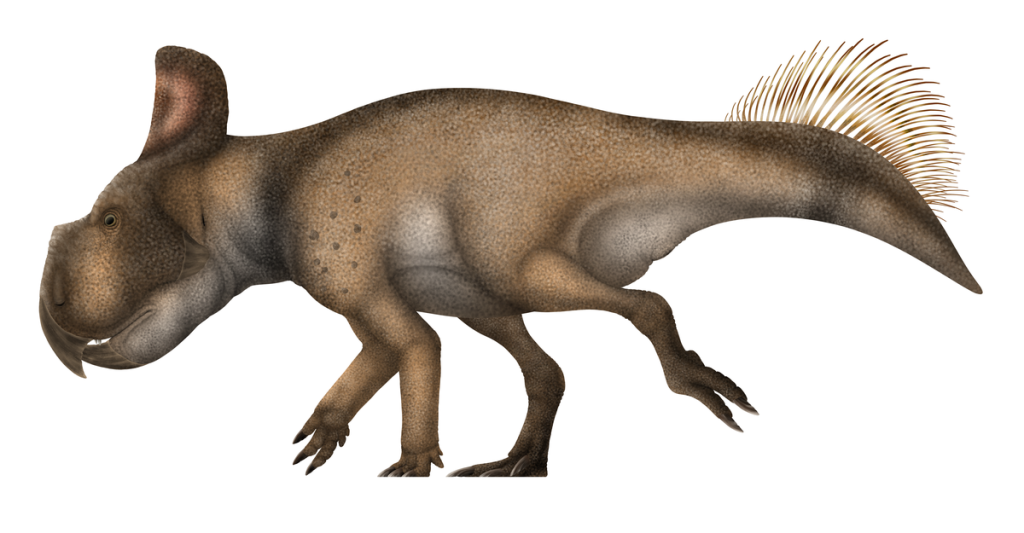 Image Source / Wikimedia CommonsThis mythological creature with the face, wings and front of an eagle and the tail end of a lion, unlike the real roc, could actually fly. It may be hard to believe this creature existed, but it's believed to have actually been a dinosaur (sort of) called the protoceratops, which walked on four legs and had a beak.
Image Source / Wikimedia CommonsThis mythological creature with the face, wings and front of an eagle and the tail end of a lion, unlike the real roc, could actually fly. It may be hard to believe this creature existed, but it's believed to have actually been a dinosaur (sort of) called the protoceratops, which walked on four legs and had a beak.Advertisement
The Sea Serpent
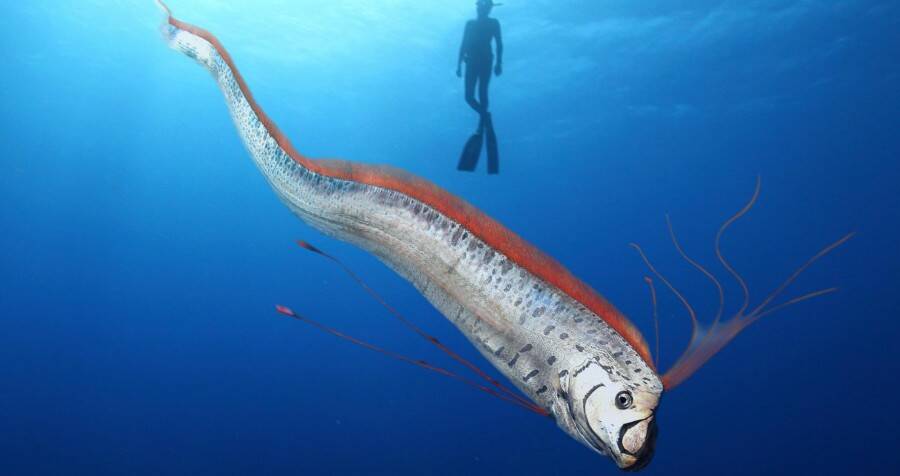 Image Source / All That's InterestingAs if the Kraken or Loch Ness Monster weren't scary enough where water is concerned, we now learn the sea serpent existed. The folklore of the sea serpent tells of a fish-snake monster roaming the seas. The sea serpent is actually supposed to be an oarfish - which does look like a fish-snake. It's around 30 feet in length, but rather than cause chaos in the ocean, it likes to stay deep underwater.
Image Source / All That's InterestingAs if the Kraken or Loch Ness Monster weren't scary enough where water is concerned, we now learn the sea serpent existed. The folklore of the sea serpent tells of a fish-snake monster roaming the seas. The sea serpent is actually supposed to be an oarfish - which does look like a fish-snake. It's around 30 feet in length, but rather than cause chaos in the ocean, it likes to stay deep underwater.Advertisement
The Yeti
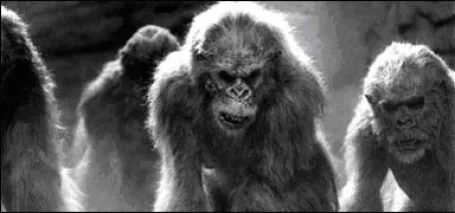 Image Source / Dark Worlds QuarterlyWe all know of the huge, hairy monster spoken about by the people of Nepal and China. In 1921, British explorers believed they'd found the creature's massive footprints while they were climbing Everest. It's more likely that the 'yeti' is actually a type of human-sized bear which lives in this region, called “metoh-kangmi” by local guides, which translates to "man-bear snow-man".
Image Source / Dark Worlds QuarterlyWe all know of the huge, hairy monster spoken about by the people of Nepal and China. In 1921, British explorers believed they'd found the creature's massive footprints while they were climbing Everest. It's more likely that the 'yeti' is actually a type of human-sized bear which lives in this region, called “metoh-kangmi” by local guides, which translates to "man-bear snow-man".Advertisement
Gorillai
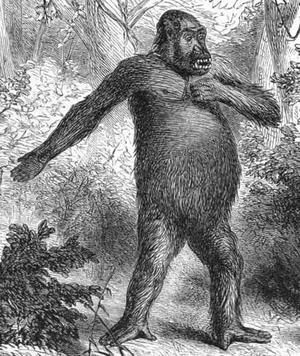
Image Source / Warehouse 13 Artifact Database Wiki - Fandom
No, this isn't just gorilla spelt wrong! The gorillai, according to folklore, was the name given to a tribe of 'hairy and rude' people that an explorer came across during the 5th/6th centuries. The creatures weren't found again until 1847. And then they were discovered to be, you guessed it... apes. And what we know today as gorillas!Advertisement
Moby Dick
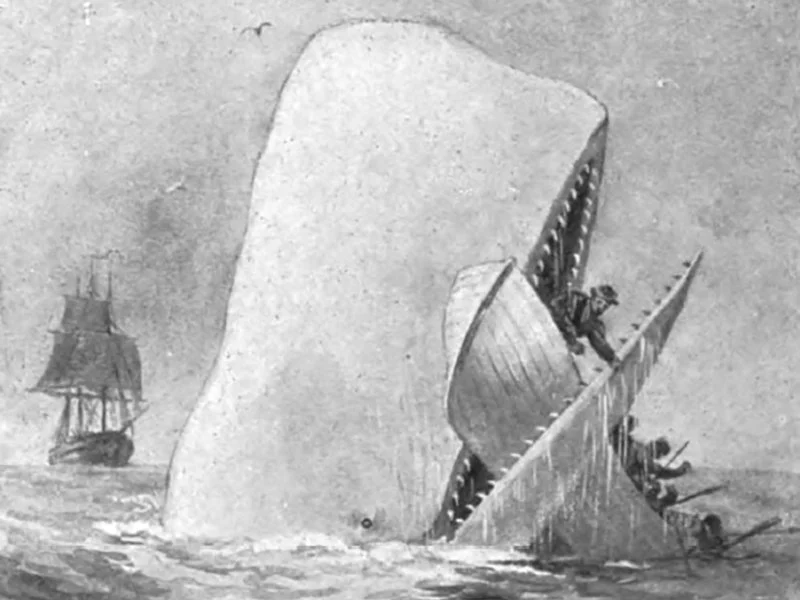 Image Source / Smithsonian Magazine Moby Dick isn't so much a myth as a fictional whale, but he's built a sort of legend in his own right as the White Whale. In real life, a ship's captain in 1820 had his ship sunk by a whale - an 85-foot white sperm whale, to be exact, that gave way to the Moby Dick legend.
Image Source / Smithsonian Magazine Moby Dick isn't so much a myth as a fictional whale, but he's built a sort of legend in his own right as the White Whale. In real life, a ship's captain in 1820 had his ship sunk by a whale - an 85-foot white sperm whale, to be exact, that gave way to the Moby Dick legend.Advertisement
Direwolves
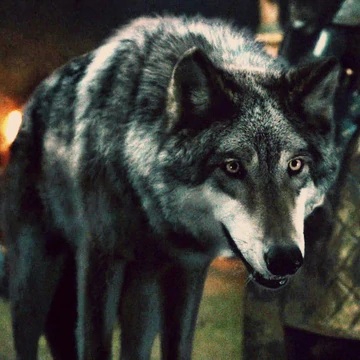 Image Source / Game of Thrones Wiki - Fandom These legendary creatures, most notably from Game of Thrones fame, are said to be gigantic wolves with a vicious nature, capable of easily taking down any enemy. In reality, dire wolves were, in fact, real animals, but they went extinct when the last Ice Age ended. The dire wolves weren't huge, but instead a similar size to normal grey wolves.
Image Source / Game of Thrones Wiki - Fandom These legendary creatures, most notably from Game of Thrones fame, are said to be gigantic wolves with a vicious nature, capable of easily taking down any enemy. In reality, dire wolves were, in fact, real animals, but they went extinct when the last Ice Age ended. The dire wolves weren't huge, but instead a similar size to normal grey wolves.Advertisement
Imoogi Dragons
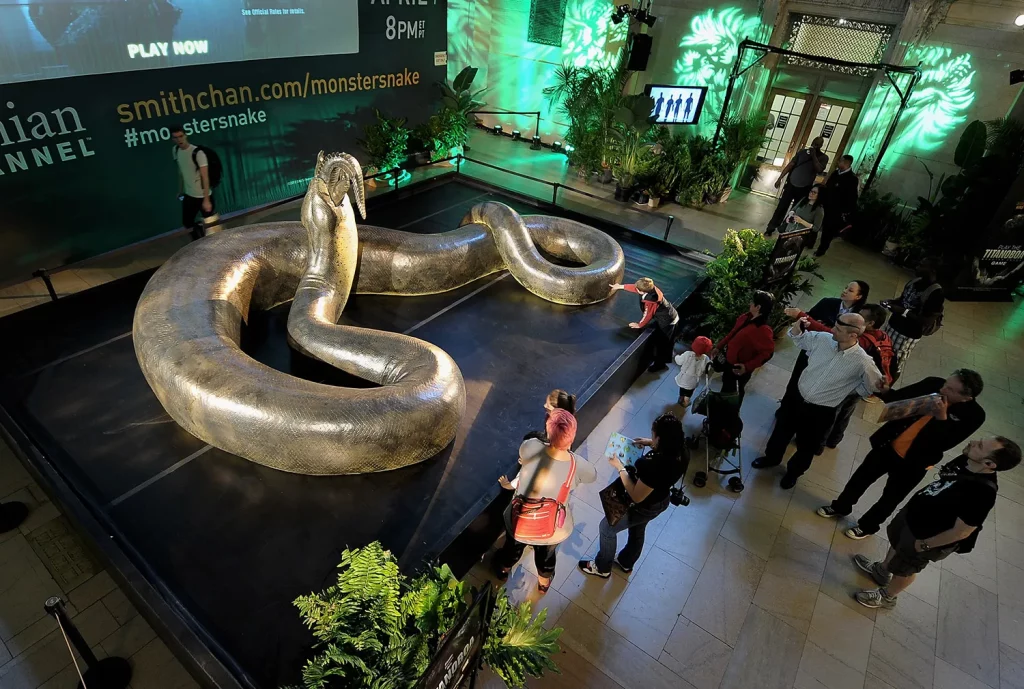 Image Source / WIRED This mythical dragon comes from Korean folklore, depicted as snake-like with four legs. They don't have wings, though, like common mythological dragons, and are often related to water. While they don't exist, in reality there is a similar creature called the titanoboa, which was the largest snake ever found. They died around 58 million years ago, though!
Image Source / WIRED This mythical dragon comes from Korean folklore, depicted as snake-like with four legs. They don't have wings, though, like common mythological dragons, and are often related to water. While they don't exist, in reality there is a similar creature called the titanoboa, which was the largest snake ever found. They died around 58 million years ago, though!Blemmyae
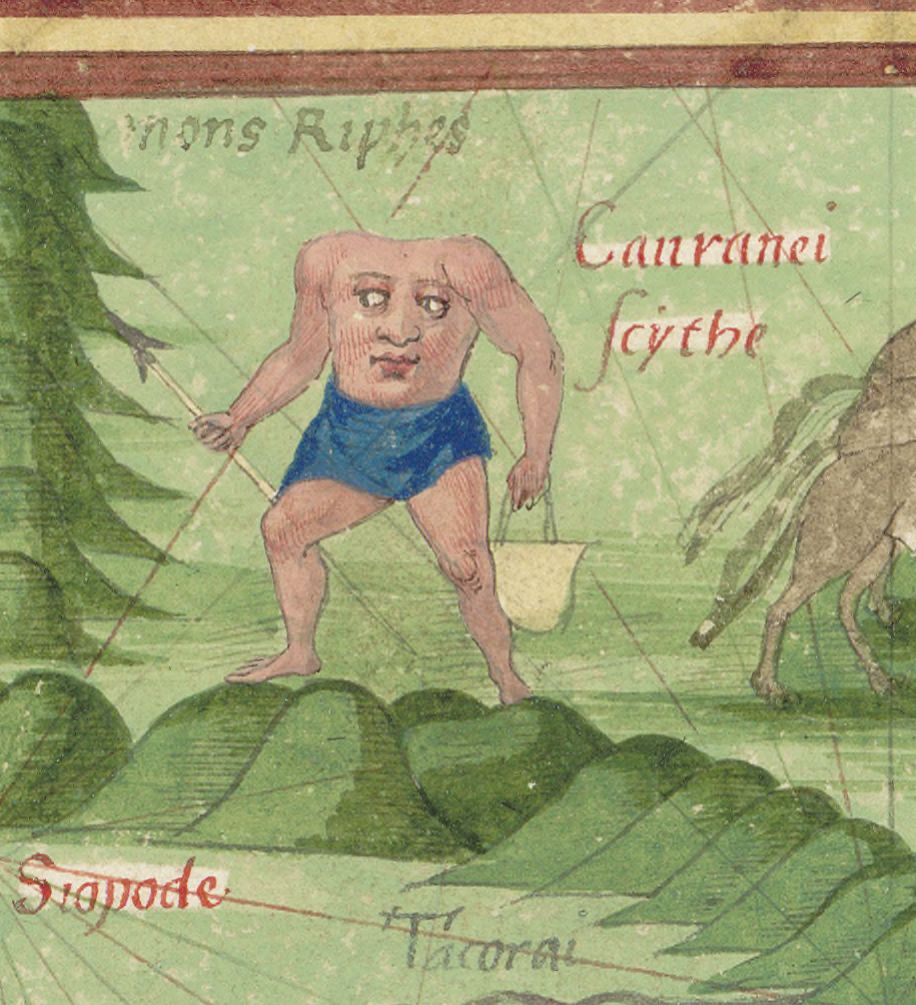 Image Source / WikipediaThe legend of the 'Blemmyae' came from sailors speaking of 'wild men' in Asia and Africa. They were described as being headless and covered in hair, as well as having their faces on their chests. In reality, it's highly possible these were highly mistaken descriptions of gorillas. Another possibility is normal tribesmen were viewed from a distance with their heads lowered, making it look like their faces were at chest level.
Image Source / WikipediaThe legend of the 'Blemmyae' came from sailors speaking of 'wild men' in Asia and Africa. They were described as being headless and covered in hair, as well as having their faces on their chests. In reality, it's highly possible these were highly mistaken descriptions of gorillas. Another possibility is normal tribesmen were viewed from a distance with their heads lowered, making it look like their faces were at chest level.Advertisement
Platypus
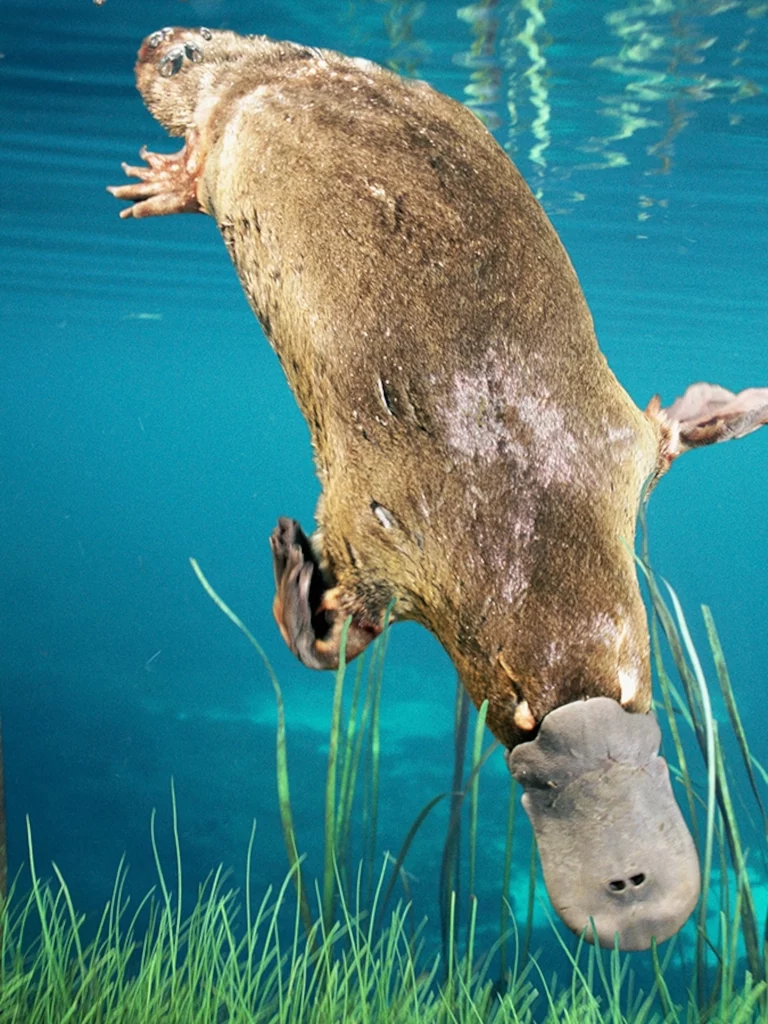 Image Source / National Geographic KidsOkay, so this one might be surprising, seeing as we already know the platypus exists. But there is actually a legend about the platypus that is very different to what we know one as today. When the platypus was first described and sketched, naturalists didn't actually believe such a thing could exist, so it turned into a mythological beast whilst being very much real!
Image Source / National Geographic KidsOkay, so this one might be surprising, seeing as we already know the platypus exists. But there is actually a legend about the platypus that is very different to what we know one as today. When the platypus was first described and sketched, naturalists didn't actually believe such a thing could exist, so it turned into a mythological beast whilst being very much real!Advertisement
The Bunyip
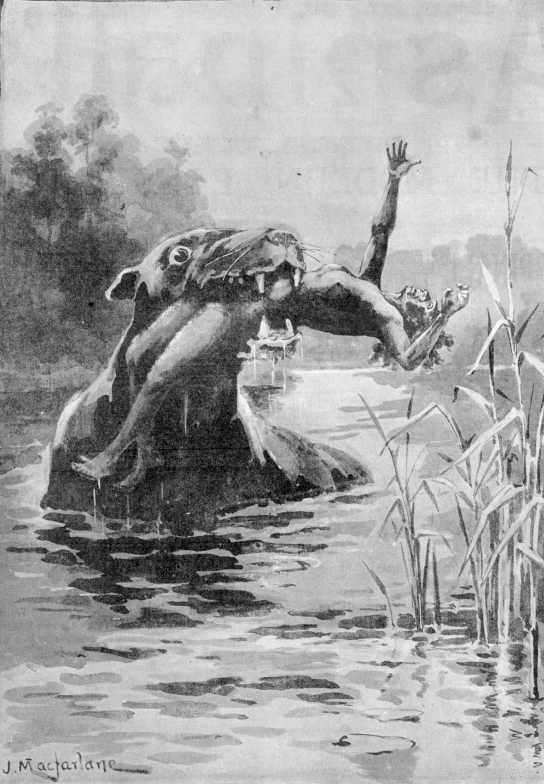 Image Source / WikipediaThe bunyip is a legendary creature of Australia said to lurk in swamps and creeks, and it's said to look like something between an emu and a crocodile. It's highly believed this creature actually exists, and The Murray River in particular is said to be a hotspot for sightings of whatever this creature is!
Image Source / WikipediaThe bunyip is a legendary creature of Australia said to lurk in swamps and creeks, and it's said to look like something between an emu and a crocodile. It's highly believed this creature actually exists, and The Murray River in particular is said to be a hotspot for sightings of whatever this creature is!Advertisement
The Chupacabra
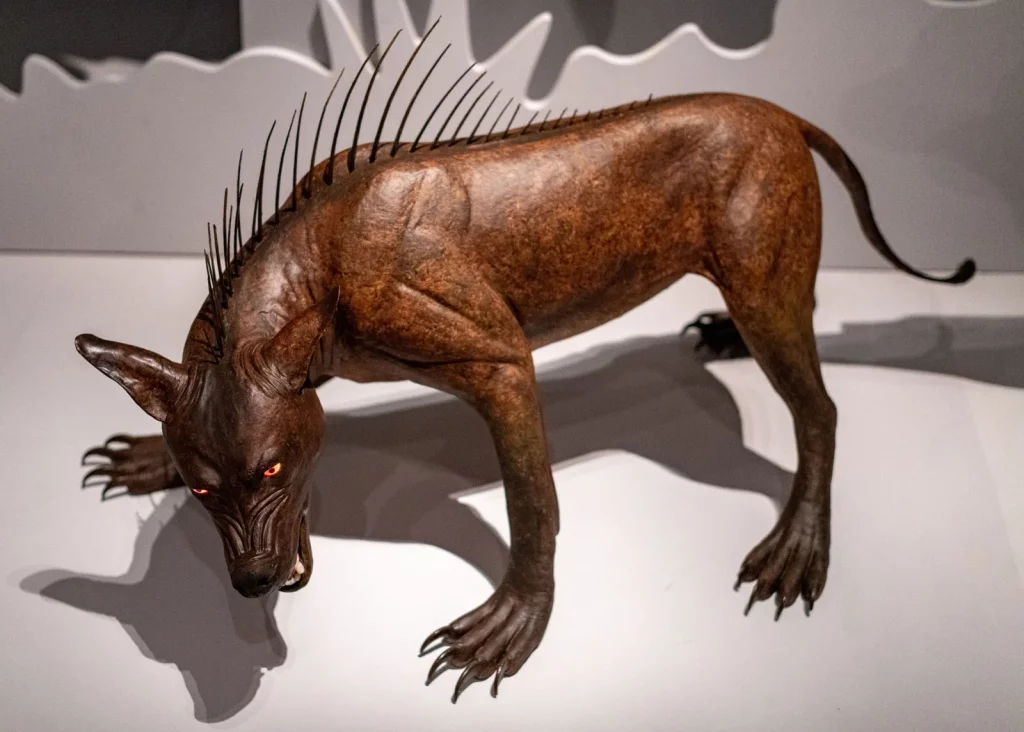 Image Source / BritannicaOf Puerto Rican folklore, this creature is said to be the size of a small bear and has spine along its back from neck to tail. It's also said to enjoy the blood of livestock. It's believed by the people of Puerto Rico to definitely exist, as one eyewitness claimed she'd seen the thing kill 150 goats!
Image Source / BritannicaOf Puerto Rican folklore, this creature is said to be the size of a small bear and has spine along its back from neck to tail. It's also said to enjoy the blood of livestock. It's believed by the people of Puerto Rico to definitely exist, as one eyewitness claimed she'd seen the thing kill 150 goats!Advertisement
The Dobhar-chú
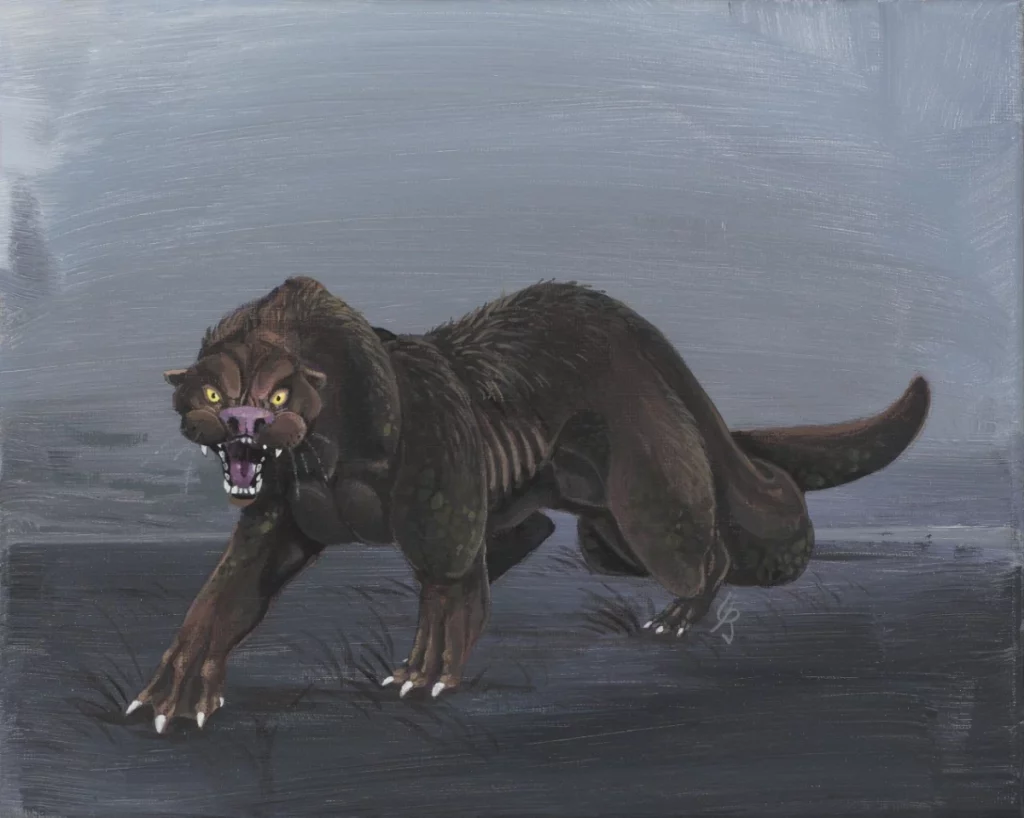 Image Source / Coffee and CreaturesHailing from Irish folklore, this creature is said to be half otter and half dog. It's said to lurk along the coast. The creature was allegedly first encountered in the 17th Century when a woman was apparently killed by it, and many believe it's real, with the woman's headstone even including a depiction of the creature!
Image Source / Coffee and CreaturesHailing from Irish folklore, this creature is said to be half otter and half dog. It's said to lurk along the coast. The creature was allegedly first encountered in the 17th Century when a woman was apparently killed by it, and many believe it's real, with the woman's headstone even including a depiction of the creature!Advertisement
The Mokèlé-mbèmbé
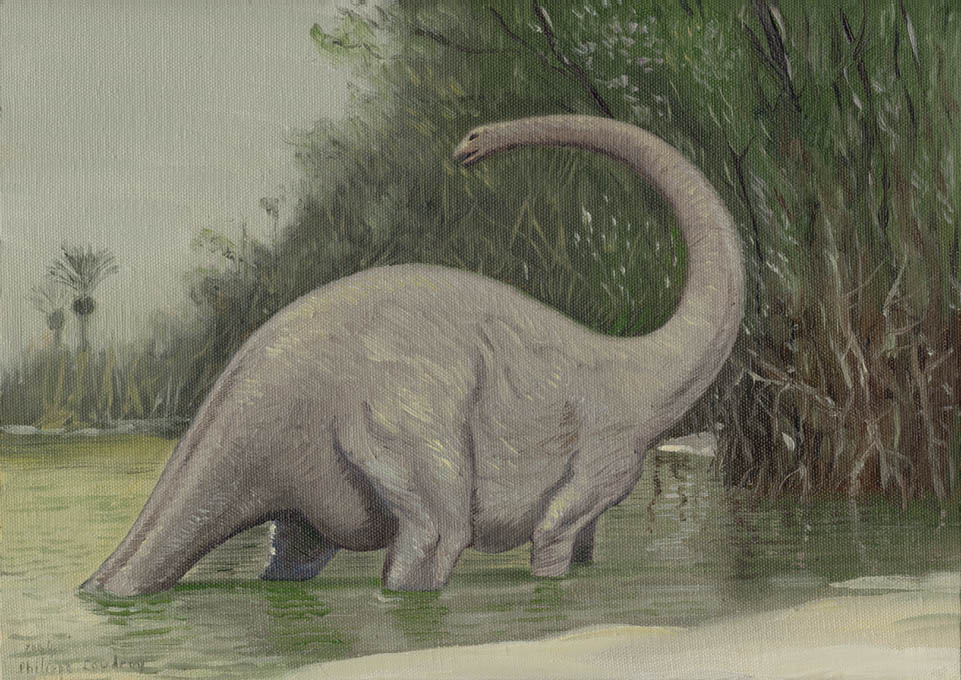 Image Source / information.tv5monde.comThis is Africa's version of Scotland's Loch Ness monster. It's said to be a giant creature with a long neck that dwells in deep water. It's believed to exist, despite a few previous expeditions failing to find it, but people go looking for it in Lake Tele in the Congo River basin.
Image Source / information.tv5monde.comThis is Africa's version of Scotland's Loch Ness monster. It's said to be a giant creature with a long neck that dwells in deep water. It's believed to exist, despite a few previous expeditions failing to find it, but people go looking for it in Lake Tele in the Congo River basin.Advertisement
The Kappa
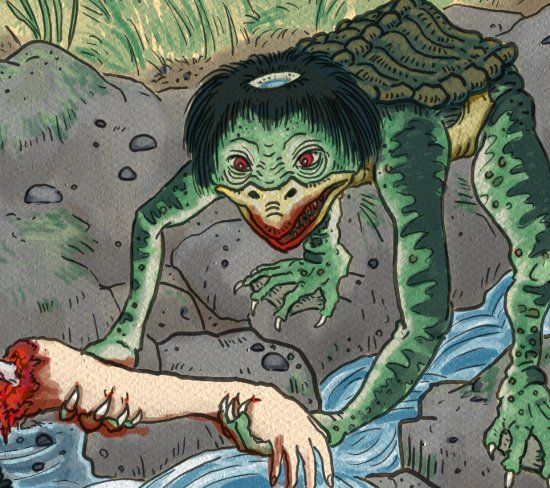 Image Source / The Storied ImaginariumIn Japanese legend, this child of the water is said to be a humanoid creature with the skin of a reptile, which lurks in ponds or rivers. Parents would tell tales of the kappa to warn children not to go near the water for too long. Kappa have been reported all over Japan, and while there's no proof the Kappa exists, it's said that it could be the hanzaki, which is a large salamander found in Kyushu.
Image Source / The Storied ImaginariumIn Japanese legend, this child of the water is said to be a humanoid creature with the skin of a reptile, which lurks in ponds or rivers. Parents would tell tales of the kappa to warn children not to go near the water for too long. Kappa have been reported all over Japan, and while there's no proof the Kappa exists, it's said that it could be the hanzaki, which is a large salamander found in Kyushu.Advertisement
The Thunderbird
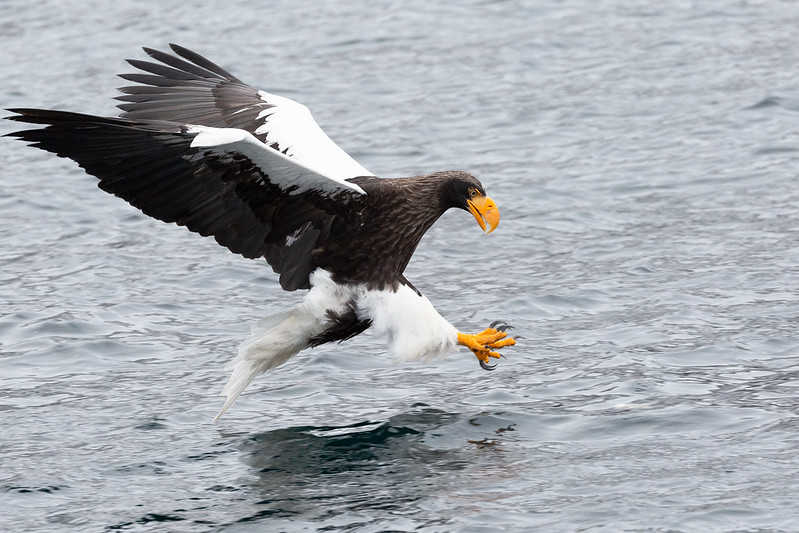 Image Source / BirdNoteThis legendary bird comes from Native America, a bird so large its said to be able to carry a whale. Aptly named, it's also said it can cause thunder and lightning. Modern people have actually reported witnessing a bird in Alaska with a 20-feet wingspan. Scientists have been quick to say this is most probably a Steller's sea eagle, which could have started the thunderbird legends.
Image Source / BirdNoteThis legendary bird comes from Native America, a bird so large its said to be able to carry a whale. Aptly named, it's also said it can cause thunder and lightning. Modern people have actually reported witnessing a bird in Alaska with a 20-feet wingspan. Scientists have been quick to say this is most probably a Steller's sea eagle, which could have started the thunderbird legends.Advertisement
Hobbits
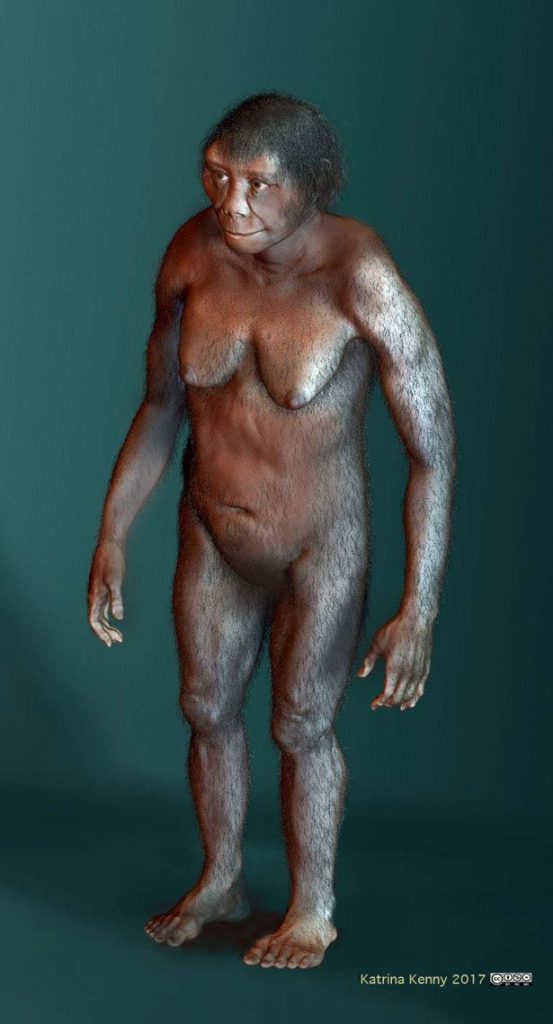 Image Source / The MirrorYou may have thought that the hobbits were a race of people entirely made up by J.R.R. Tolkien, but actually a race of people small in stature like hobbits appeared on the earth alongside regular-sized humans from 50,000 to 190,000 years ago. The remains of a 3-foot-tall adult woman were found in a cave in Indonesia, and through tests it was determined that there wasn't any other medical condition to cause short stature, as the skull was normal sized.
Image Source / The MirrorYou may have thought that the hobbits were a race of people entirely made up by J.R.R. Tolkien, but actually a race of people small in stature like hobbits appeared on the earth alongside regular-sized humans from 50,000 to 190,000 years ago. The remains of a 3-foot-tall adult woman were found in a cave in Indonesia, and through tests it was determined that there wasn't any other medical condition to cause short stature, as the skull was normal sized.Advertisement
The Basilisk
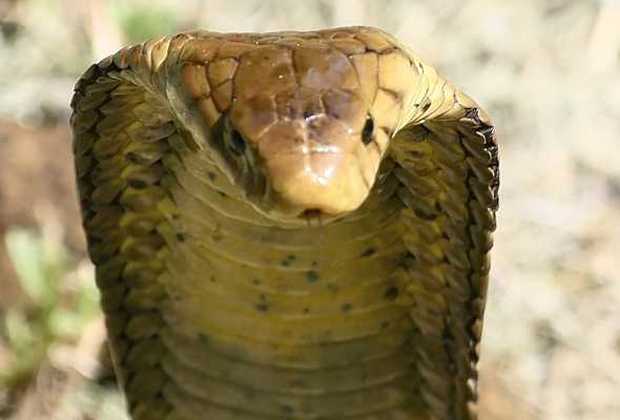 Image Source / Snake Facts - Weebly
Image Source / Snake Facts - WeeblyAdvertisement
Advertisement
Werewolves
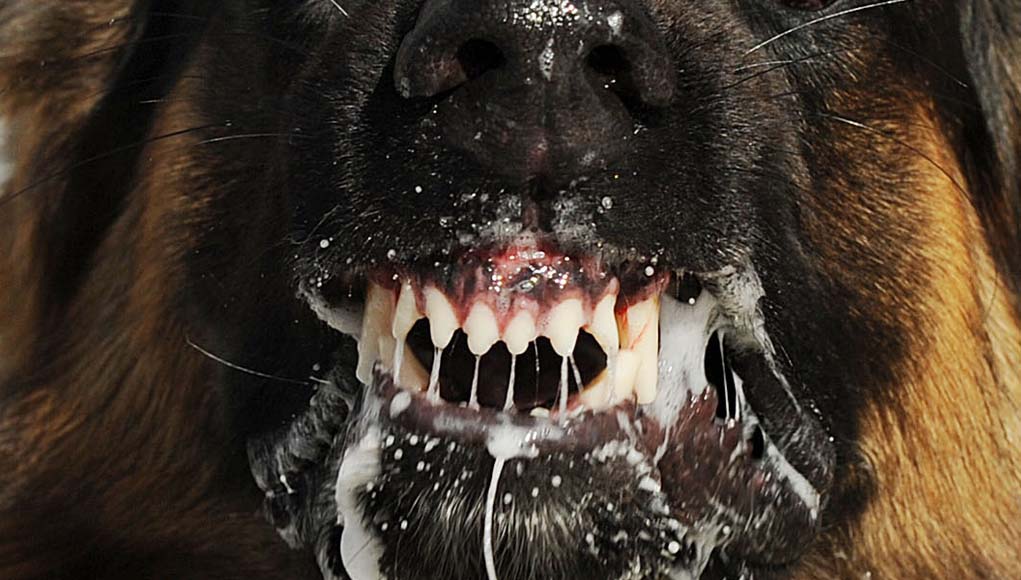 Image Source / Top Dog TipsWerewolves have been part of legend for a long time and have long since made their way into modern media. Behind the legend is actually fact, which saw wild animals and even household dogs being infected by rabies. If a person was bitten by a rabid animal, their correct posture could turn into one bent, crawling on the floor and see them foaming at the mouth. And if that person also had a lot of hair... there you go.
Image Source / Top Dog TipsWerewolves have been part of legend for a long time and have long since made their way into modern media. Behind the legend is actually fact, which saw wild animals and even household dogs being infected by rabies. If a person was bitten by a rabid animal, their correct posture could turn into one bent, crawling on the floor and see them foaming at the mouth. And if that person also had a lot of hair... there you go.Advertisement
Aliens
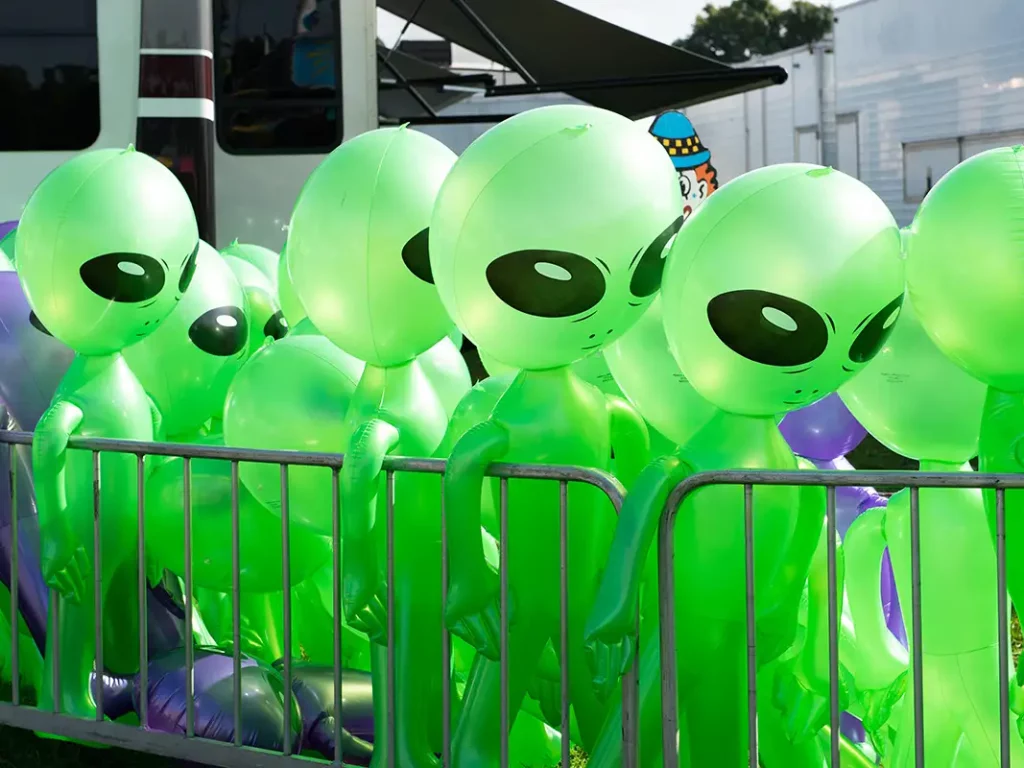 Image Source / New ScientistNot so much a mythical creature, but definitely an area of 'do these things actually exist' controversy. The reports of alien visitations can be explained away by things like weather balloons or military crafts, but the fact is, life does exist on other planets, it just might not be thin green men landing on our planet.
Image Source / New ScientistNot so much a mythical creature, but definitely an area of 'do these things actually exist' controversy. The reports of alien visitations can be explained away by things like weather balloons or military crafts, but the fact is, life does exist on other planets, it just might not be thin green men landing on our planet.Advertisement
Giants
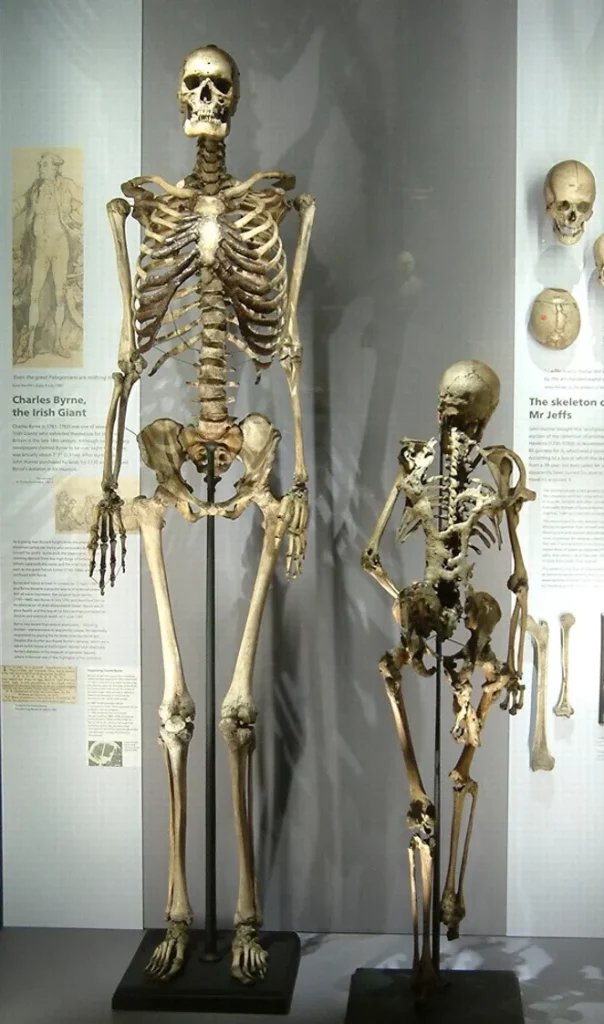 Image Source / Strange RemainsSome legends of giants include the Irish giant Fionn mac Cumhaill said to have created (and destroyed) the Giant's Causeway. But of course, giants - or humans with a condition called gigantism - do exist in real life. In the Hunterian Museum, there are the bones of an 18th-century circus performer who had gigantism.
Image Source / Strange RemainsSome legends of giants include the Irish giant Fionn mac Cumhaill said to have created (and destroyed) the Giant's Causeway. But of course, giants - or humans with a condition called gigantism - do exist in real life. In the Hunterian Museum, there are the bones of an 18th-century circus performer who had gigantism.Advertisement
The Jackalope
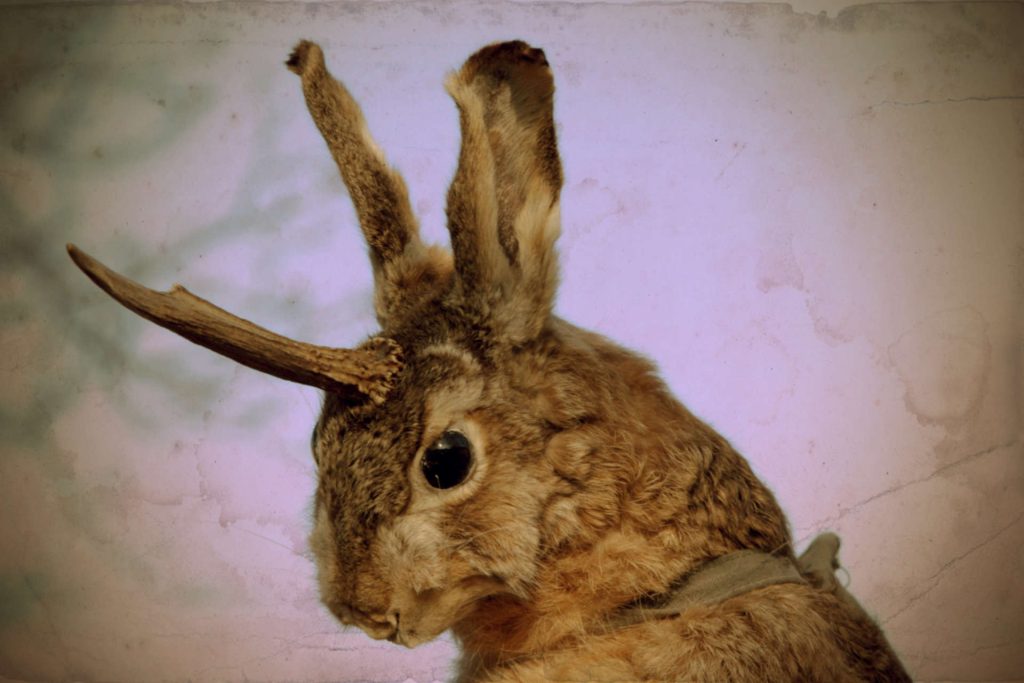 Image Source / Zoo AtlantaThe mythological 'jackalope' is said to be a rabbit that has antlers, and sometimes you can find heads created by taxidermists on the walls of places in the Midwest. But a lot of locals stand by the fact the jackalope really exists, and have taken pictures of it. And then it turns out that within the mammal collection at the Smithsonian Museum was found a jackalope - a rabbit which had grown hornlike tumors from its head.
Image Source / Zoo AtlantaThe mythological 'jackalope' is said to be a rabbit that has antlers, and sometimes you can find heads created by taxidermists on the walls of places in the Midwest. But a lot of locals stand by the fact the jackalope really exists, and have taken pictures of it. And then it turns out that within the mammal collection at the Smithsonian Museum was found a jackalope - a rabbit which had grown hornlike tumors from its head.Advertisement
The Vampire Deer
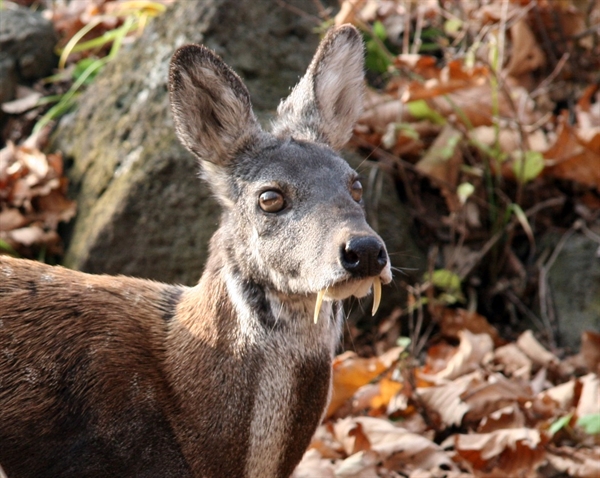 Image Source / WCS Newsroom - Wildlife Conservation SocietyThe 'vampire deer' actually exists, but it's not a blood sucker at all. The name comes from the musk deer's protruding teeth which look like - you guessed it - fangs. These saber teeth are what the male deer use to fight. The creature is also sadly hunted for its scent glands, and may become extinct.
Image Source / WCS Newsroom - Wildlife Conservation SocietyThe 'vampire deer' actually exists, but it's not a blood sucker at all. The name comes from the musk deer's protruding teeth which look like - you guessed it - fangs. These saber teeth are what the male deer use to fight. The creature is also sadly hunted for its scent glands, and may become extinct.Advertisement
